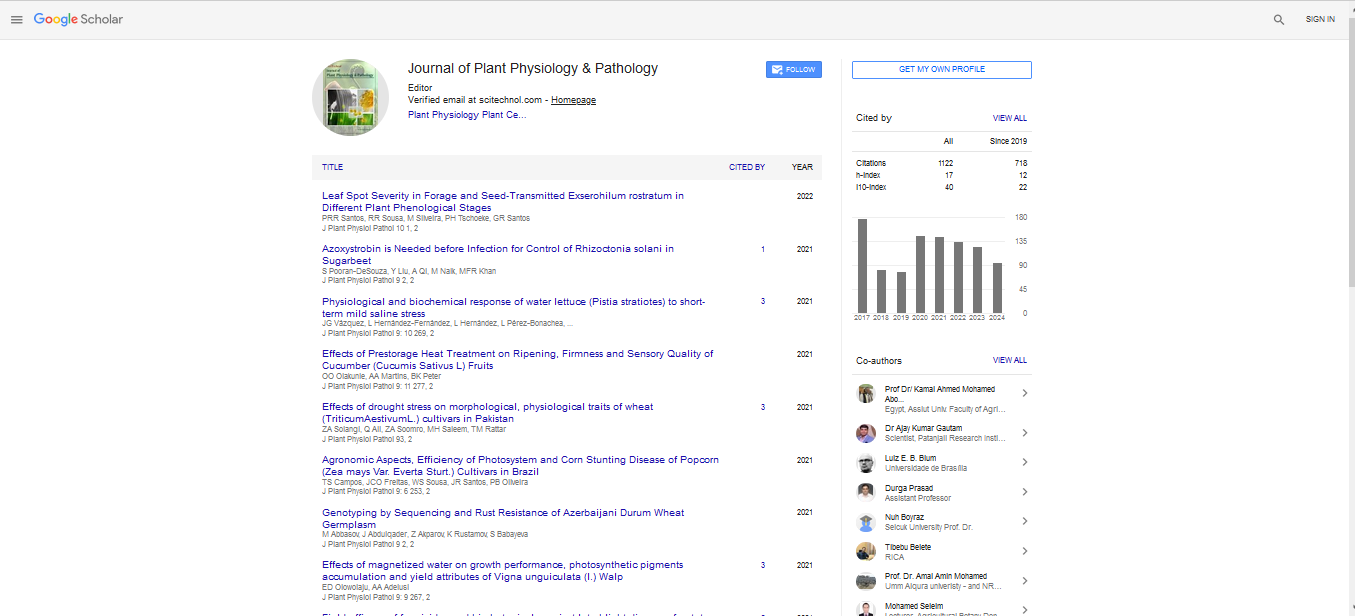Effect of pre emergence soil applied halosulfuron herbicides on broccoli (Brassica oleracea var. cymosa) hybrid seedlings
Egbueze EI, Makungu M and Awumey RCY
University of South Africa, South Africa
: J Plant Physiol Pathol
Abstract
The Pest Management Regulatory Agency in South Africa has not registered so many pre-emergence herbicides and recommended for weed management in broccoli crops in South Africa. The aim of this experiment was to test the sensitivity of direct-seeded broccoli hybrids to varied application rates of 4 pre-emergence herbicide including; Metolachlor at (0.4, 0.8, 1.2, 1.6,2.0,2.4 and 2.8l/ ha), Clomazone (1.0, 2.0, 3.0, 4.0, 5.0 6.0 and 7.0 ppm/ ha), Oxadiazon (0.25, 0.5, 1.0, 1.5, 1.75, 2.0 and 2.5 l/ha), Halosulfuron (0.015, 0.025, 0.040, 0.055, 0.070, 0.085 and 0.1l/ha) and a non-herbicide treated control. It was discovered that herbicide tolerance among broccoli hybrids was dependent on herbicide formulation and application rates. A high visual crop injury generally was observed in metolachlor, clomazone and the highest was in oxadiazon while halosulfuron had the least injury. Halosulfuron caused a 10% visual injury. Clomazone and Metolachlor herbicides caused unacceptable injury (greater than 25%) at the proposed use dose of each herbicide applied at planting assessed at 7, 14, and 28 days after treatment (DAT). Halosulfuron is the only herbicide to which broccoli possessed an acceptable level of tolerance at application rates of 0.015, 0.025, 0.04 and 0.055 l/ha.
Biography
Egbueze Emmanuel Ifeanyi is currently pursuing his doctoral studies in Agriculture at the University of South Africa, South Africa. He is a member of the Weed Science Society of America (WSSA). He is currently managing his Agricultural firm, in South Africa. He has published a very few papers in reputable journals.
E-mail: egbueze@yahoo.com
 Spanish
Spanish  Chinese
Chinese  Russian
Russian  German
German  French
French  Japanese
Japanese  Portuguese
Portuguese  Hindi
Hindi 
